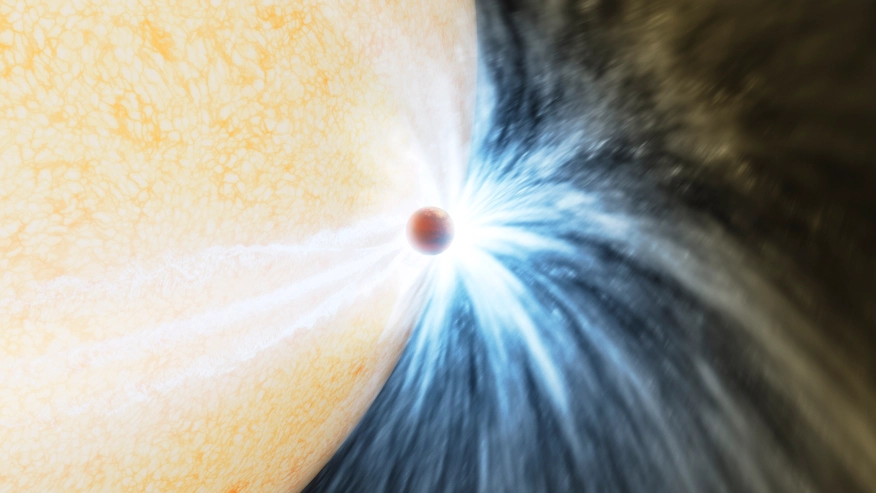

Star swallows Jupiter-sized planet whole
For the first time ever, scientists have actually seen the moment that a dying star swallowed a planet that was the size of Jupiter.
While astronomers have previously seen planets just before and just after being engulfed by a star, this is the first time that a planetary demise has been observed, according to a team of scientists from the Massachusetts Institute of Technology, Harvard University and the California Institute of Technology.
The findings were published on Wednesday in the journal Nature.
“The fact that the solar system planets would get engulfed into the sun in the future was something I had read first in high school, so it was surreal to realize that we may have found the first ever example of catching a similar event in real time!” study lead author Kishalay De, a postdoctoral researcher at Massachusetts Institute of Technology, told CNN.
The process involves a star expanding to a million times its original size as it runs out of fuel, engulfing any matter in its wake. Astronomers spotted a white-hot flash from a distant star in our Milky Way galaxy and concluded that it came from the final stage of this process, according to a new paper published in the journal Nature.
“One night, I noticed a star that brightened by a factor of 100 over the course of a week, out of nowhere,” said De in a press release. “It was unlike any stellar outburst I had seen in my life.”
The planetary demise took place around 12,000 light-years away in the Aquila constellation, and involved a planet the size of Jupiter, researchers said.
They observed the activity in May 2020, but it took a year to work out what they had seen.
Earth is expected to meet the same fate, but after a 5 billion years, according to scientists.
“We are seeing the future of the Earth,” De said in the press statement. “If some other civilization was observing us from 10,000 light-years away while the sun was engulfing the Earth, they would see the sun suddenly brighten as it ejects some material, then form dust around it, before settling back to what it was.”
Prime Minister Narendra Modi on Tuesday held a telephonic conversation with Union Home Minister Amit…
Prime Minister Narendra Modi landed in Jeddah on Tuesday for a two-day State visit to…
Lauding the "deep connection" between the United States and India, US Vice President JD Vance…
Indian Minister of Power and Housing Affairs, Manohar Lal Khattar, visited the Arun-III Hydel Project,…
The body of the late Pope Francis will be transferred to St. Peter's Basilica on…
The case of Baloch human rights activist Dr Mahrang Baloch has been officially accepted for…